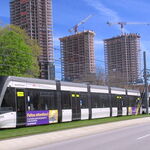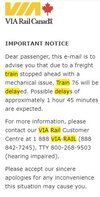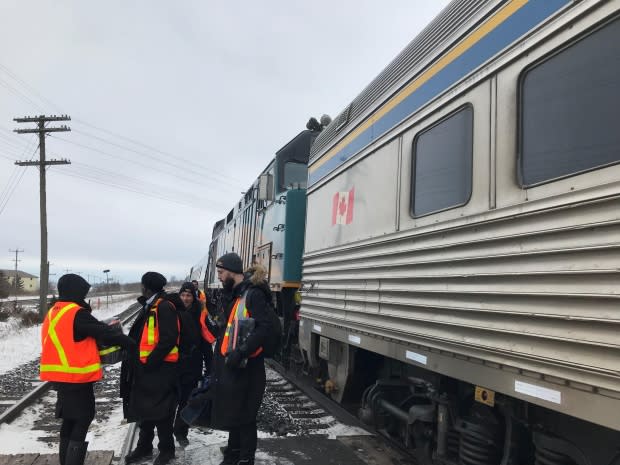Wrong answer. I would have accepted:
I would love to be 4 hours delayed getting home because of mechanical issues (I overheard an engineer spilt coffee on the control panel) and had to wait for a replacement locomotive from Toronto (many people missed their flights home for reading week) (train 76).
I would love to be 4 hours delayed getting home because the locomotive couldn't operate properly due to subzero temperatures and that a replacement locomotive had to be brought in from Toronto (train 80).
I would love to be 2 hours delayed causing me to miss class because of a frozen track switch (train 71).
I would love to be an hour and a half delayed because of signal issues (too many to count).
I love missing family dinners because I got stuck behind a freight train (too many to count).
I would love to be delayed 4 hours causing me to miss a meeting because a coupler on a CN freight train broke blocking a single track (train 76).
I love how CN placed loose equipment on the tracks causing multiple emergency stops and the delightful smell of burning brake fluid and my train getting hopelessly delayed behind slow GO trains running into Toronto. This practice eventually culminated in fuel leaks, smashed windows, and cascading delays resulting in exhausted crews across the network over several days. I still remember reading posts on Twitter about how the people on board were stuck for hours in the cold without access to power, heat, or the toilets because the engine had to be shut off due to a suspected fuel leak (that could have been my train).
A Via Rail train traveling between Toronto and Ottawa had to be evacuated after it was hit by debris near Trenton, Ont., Saturday afternoon.

ca.news.yahoo.com
If you're wondering why I'm so concerned about there being a staff member in each car ∨
I would love to be an hour and a half delayed because a woman overdosed and had a seizure on the train and had to be taken off at a level crossing just outside of Brantford (train 76).
I would love to be an hour delayed because a man had a heart attack on the train had to be taken off at Oakville (train 78).
And finally,
I love how I was 1-3 hours delayed because someone took their lives on the tracks and caused cascading delays across the VIA network (multiple times).
I would love to be 2 hours delayed because someone was smoking on the train and assaulted a crew member (train 78).
















